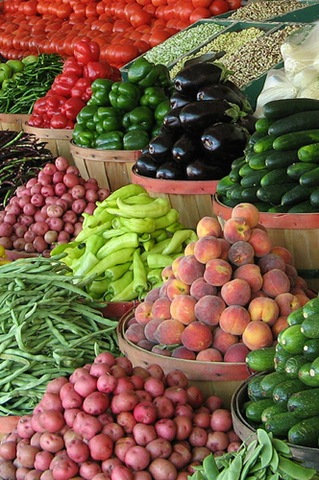Plant Protein Power
 Protein is the most essential nutritional element for the body (after, of course, water) – its very name provides the essential clue. The root base of the word protein comes from the meaning. “of first importance”, and that is what protein is for the body – primal, necessary, vital. And many of the critical processes in the life of the human body derive from the intake of protein. That is why protein is such a key issue in nutrition.
Protein is the most essential nutritional element for the body (after, of course, water) – its very name provides the essential clue. The root base of the word protein comes from the meaning. “of first importance”, and that is what protein is for the body – primal, necessary, vital. And many of the critical processes in the life of the human body derive from the intake of protein. That is why protein is such a key issue in nutrition.
When it comes to protein, quality matters. The better the quality of the protein, the better the utilization by the human body. Protein is rated on a couple of different scales – biological value, and protein digestibility. Both are of concern when determining the quality of the protein source.
Biological value (BV) is the first tool to check on the potency of protein. Biological value is a scale of measurement used to determine what percentage of a given nutrient source is utilized by the human body. The higher the biological value, the better.
The top gun in the protein world is the egg, which ranks out at a perfect 100 score. Poultry such as turkey and chicken ranks at a BV of 79, followed by fish at 70, lean beef at 69, corn at 36 and beans at 34. If you take a look at the list, there is a discernable differentiation – animal source proteins score a lot higher than plant-based proteins. In fact, plant-based proteins come in at a BV of below 60. The most popular (according to sales) vegetable protein source, soy protein, has a BV of just 47.
Protein digestibility corrected amino acid score
For years, the Protein Efficiency Ratio (PER) was the complementary tool to the BV for measuring protein. However, a new scale has been recognized lately – the Protein Digestibility Corrected Amino Acid Score (PDCAAS).
The PDCAAS method of measuring protein quality differs from that of the PER and BV. The PER was based on amino acid requirements of rat. However, the PDCAAS bases evaluation of food protein quality on a human’s requirements, it measures protein quality based on the amino acid needs of preschoolers (adjusted for digestibility).
Overall, the plant-based proteins fall far short of the animal-based proteins. And if you look at a combination of both the BV and the PDCAAS, plant-based protein doesn’t come close to the animal-based proteins.
The main reason is that the animal-based proteins contain all the essential amino acids, and the plant-based proteins do not. The game plan that many trainees have used is to strategically combine the different types of vegetables that complement each other to make a complete essential amino acid profile in one meal.
That type of thinking is now being challenged by the idea that amino acids can be pooled over the course of a day (that the body operates an amino acid pool which collects all proteins and configures them as it needs to). The animal-based versus protein-based approach is still under debate and much research is ongoing.
Perhaps the most balanced answer comes from the College of Agriculture and Life Sciences at the University of Arizona, which notes: Are animal sources of protein better, since they are of higher biological value?
The answer is “Not necessarily”, Animal protein sources tend to be higher in fat and lower in fiber than plant protein sources. High protein intakes from animal sources have been associated with increased risk of heart disease, chronic disorders, and some cancers. For this reason, plant sources of protein may be preferable to animal sources, if a variety of plants is used. Animal protein does not need to be avoided, as it is still a good source of nutrients, but lower-fat items such as poultry and fish and limited protein sizes of higher-fat meats are desirable. A variety of proteins from plants and animal sources should be consumed, to assure that the diet has an adequate amount of protein, with a balance of amino acids.
And what about the fitness athlete? Will a vegetable-based protein diet prove adequate? Athletes have a higher need for quality protein, and the College of Agriculture and Life Sciences also addresses this necessity.
A vegan athlete may also have increased protein needs, since plant proteins are of a lower biological value, but a mixture of plant proteins can be equivalent to animal proteins. Vegetarian diets also tend to be more filling, which may make it harder fro an athlete to consume adequate calories and protein. To help avoid inadequate protein consumption, the vegetarian athlete should consume a variety of plant foods.
The debate about whether or not plant-based protein stacks up to animal sources is ongoing. Athletes who rely on the vegan approach have to be more careful in their daily intake to insure that they cover the bases. And there is the additional concern of other nutrients found in animal-based foods to consider, such as the fact that protein-support elements like creatine occur in notable amounts in animal-based foods, but not in plant-based sources. At this point, the debate is far from over.

